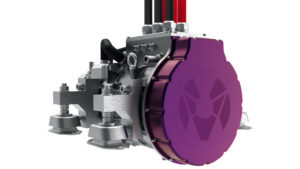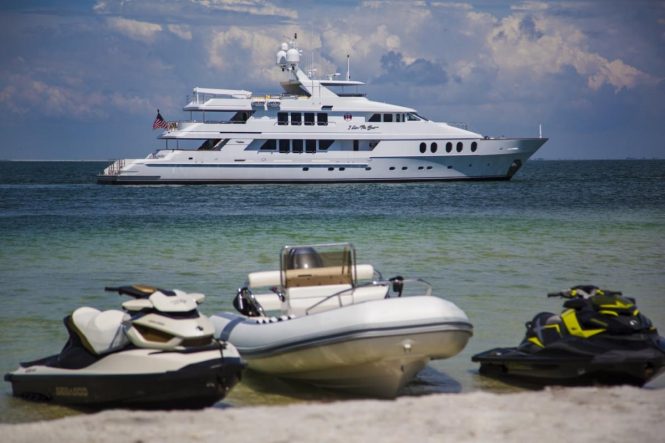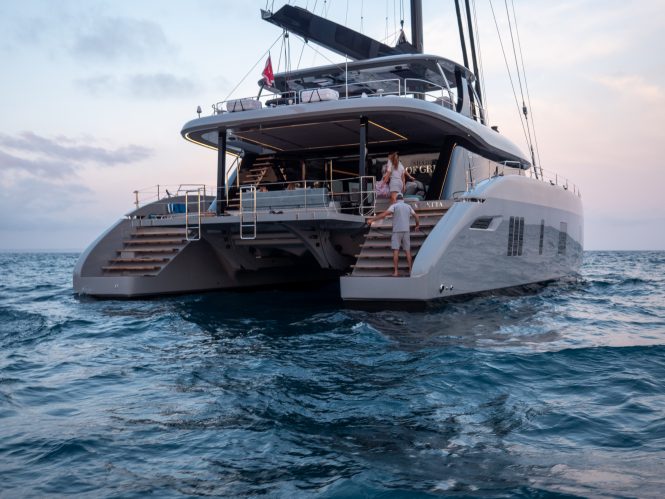With a novel 48V system that matches the efficiency of high-voltage setups, Molabo is simplifying electric and hybrid propulsion for yachts and commercial vessels alike

Molabo, a little-known German company with firm roots in academic research, offers a radically different alternative for marine electric and hybrid propulsion systems.
Conventional electric motors powerful enough to propel a reasonably sized yacht require one of two big compromises. To maximise efficiency system voltage must be very high and 400V or more is not uncommon. Yet this has safety implications that some owners find unacceptable, even if commercial vessels are already operating reliably with 800V DC systems.
In addition, high voltages create a potential for maintenance hassles, as few marine electricians in the recreational marine world are trained or qualified to work on them.
Novel new motor
Today almost every electric motor uses three sets of windings in much the same manner as those of 100 years ago. Yet these windings are fragile and therefore prone to burning out in an over-current situation or as a result of a water cooling failure. They are also susceptible to damage caused by mechanical stress as a result of vibration stemming from poor installation or manufacturing defects.
By contrast, Molabo uses a novel type of low voltage electric motor, developed by the company’s founders at the Universität der Bundeswehr München Lab under the guidance of Professor Dieter Gerling, who remains involved with the project.

Low voltage Molabo can be included in a fully integrated system
The key breakthrough is in the use of 12 solid metal rods, instead of three sets of windings, in what the company calls an Intelligent Stator Cage Drive (ISCAD). This simplifies the motor and has the potential to lower production costs once volumes increase.
This multi-phase approach, with a dozen phases in parallel, makes high traction power at 48V a reality. This means the motors can run efficiently at far lower voltages than others without requiring massively heavy wiring to handle high currents.
Low voltage, high power
The result is a low voltage 48V DC system that has efficiency equivalent to conventional high voltage installations.
Article continues below…
Leopard 46 Hybrid first look: Combining the benefits of diesel and electric
Here is another key replacement model after South African yard Robertson and Caine built over 400 of the Leopard 45.…
Petrol outboard engines VS Electric outboard motors: real world comparison
I’ve been using outboard motors since I was a kid in the 80s. I grew up with petrol outboards. I’m…
Peak efficiency at maximum power is 94% and at lower speeds and partial load it far exceeds that of traditional electric motors units. In these scenarios co-founder Adrian Patzak told me: “the efficiency advantage over high voltage systems is around 20%.”
This ability to deliver high power at safe-to-touch voltages is one of a number of reasons Molabo chose to explore the marine market first.
“Volumes are small so startup costs are lower,” adds Patzak, “and it’s an area in which safe-to-touch voltages are enormously appealing.” However, the firm’s long term plans extend into very high volume mainstream markets.
In the marine sector, a further advantage of the ability to deliver high power at low voltages is that it allows for remote fault-finding and diagnosis, with advice and support given directly to owners – who may be in far-flung parts of the globe – that would not make sense with high voltage systems.
The Aries i50 inboard drive 50kW system was first launched in 2021 and is used successfully in ferries that operate for 8-10 hours a day. That model was followed by a 50kW outboard unit, before 25kW inboard and outboard models earlier this year.

Aries i50 is compact yet powerful
Integrated systems
All are packaged with Mastervolt or Victron lithium-ion phosphate batteries and chargers in an integrated, modular approach designed for safe plug-and-play installations, with the minimal amount of complexity possible.
Molabo systems are also finding favour in sailing yachts. The judel/vrolijk-designed Baltic 67 performance cruiser Freedom, for instance, has a hybrid system with a 50kW Molabo Aries i50 inboard drive allied to a 150hp Volvo Penta D3 diesel engine, plus a 55kW battery bank that provides power both for propulsion and all onboard systems, including hotel loads.
Range under power is three to four hours at 7 knots. The arrangement allows the boat to be driven by the electric or diesel engines. In the latter case the Aries i50 drive can function as a very high power generator, while regeneration while sailing is also possible.
A controllable pitch propeller optimises drive, as well as maximising regeneration efficiency. The boat is also fitted with a Dockmate joystick system for manoeuvring in tight spaces using the Molabo electric motor and the thrusters.
 If you enjoyed this….
If you enjoyed this….
Yachting World is the world’s leading magazine for bluewater cruisers and offshore sailors. Every month we have inspirational adventures and practical features to help you realise your sailing dreams.Build your knowledge with a subscription delivered to your door. See our latest offers and save at least 30% off the cover price.
Note: We may earn a commission when you buy through links on our site, at no extra cost to you. This doesn’t affect our editorial independence.
The post High Power, Low Voltage: Molabo’s Game-Changing Electric Marine Drives appeared first on Yachting World.




